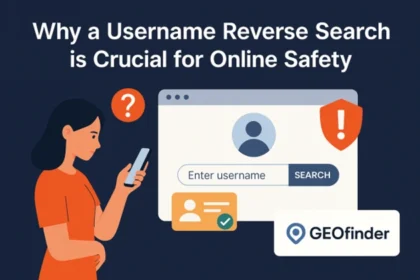These days, local SEO plays a pivotal role in business growth. With its help, companies can enter new markets and focus on attracting qualified leads from those markets. As a result, they can get noticed and dominate new areas faster.
In order to start optimizing for local search effectively, your business needs two primary things. First, you’ll want to leverage the right tools to optimize your efforts and make them more accurate. You can use independent SEO software review sites like Top10seosoftware.com to explore different SEO tools and read software reviews and comparisons to pick the right solutions. And secondly, you’ll need a thorough local SEO strategy, which we’re about to share now.
Step 1: Get Clear on Your Target Market
To start optimizing for local search, you need to identify your targets. First, get clear on the area you’re looking to break into. Then, based on this, you can identify local demographics using the available tools.
For example, in the US, the Census Bureau covers 100,000+ data profiles for different geographies, including states, counties, zip codes, etc. With this tool, you can explore ethnicities, ages, income levels, and other socioeconomic statistics about the areas you’re interested in. Use this and similar tools to understand the profile of your target market and know who you’ll be reaching out to with your SEO campaigns.
Also, a good way to dive deeper into your prospects’ needs and behavior trends is to conduct keyword research. By leveraging local keyword research tools, such as Google Keyword Planner, you can not only identify high-potential queries for your content but also see what products and services people are searching for the most in a given area. Keyword research will help you see their pain points and common questions. Based on this, you can define what kind of content they will be interested in the most.
Finally, let’s not forget about the role of trends in entering new markets. Tools like Google Trends allow you to tap into the most popular searches in a specific area, observe how interest in them changes over time, and understand how the given topic resonates with different subregions. All this data can be incredibly helpful for understanding your target market.
Step 2: Build Your Presence in the Local Search
Once you know your targets and have a list of relevant area-specific keywords, you can start optimizing for local search. The first step in this process implies building your business presence through the Google Business profile and other relevant directories.
Google Business is basically Google’s own directory of all businesses with an online presence in Google Search and Maps. It enables you to get featured in area-specific results and showcase the core information about your company, such as the address, phone number, opening hours, and others, to users. To build your presence, you need to create a Google Business profile and optimize it with the following tips:
- Feature high-quality and appealing photos and other media.
- Provide a clear and relevant description of your company and optimize it with target geo-based keywords.
- Provide accurate and consistent NAP data (Name, Address, Phone Number) and always keep it updated.
- Encourage existing customers to share reviews to create your rating. Then, learn to manage customer reviews effectively by promptly answering them.
Other online directories, such as general ones like Yelp, Facebook, and Apple Maps, as well as niche-specific ones like Tripadvisor, also play a massive role in local SEO. They give you additional visibility in your market. At the same time, these directories will help you earn greater authority and credibility by building more citations, links, and reviews. So be sure to create listings across relevant platforms and optimize them like your Google Business profile.
Lastly, don’t forget about content when building your presence. Remember that relevance and on-page signals, such as visitor engagement, are among the core local search ranking factors. That is, you need to produce valuable and engaging geo-targeted content to succeed in local SEO.
Step 3: Building Backlinks and Tracking Results to Outrank Competitors
Lastly, if you want to break into new markets and outdo the competition, you need to focus on building area-specific backlinks, which will expand your outreach and help you boost credibility. Leverage tactics like guest blogging, broken link building, unlinked mentions, and others to gain more links to your site. Also, focus on creating share-worthy content, such as:
- Unique case studies and insights;
- Infographics;
- Geo-targeted long-form content, etc.
And don’t stop there! After optimizing your site and content, leverage SEO analytics to track your results and refine your strategy for greater outcomes.
Conclusion
While search engine optimization generally focuses on driving all types of qualified traffic to your website with the goal of getting you noticed by prospects, area-specific optimization focuses on targeting prospects within a particular area. Hence, it’s effective for capturing audiences within a specific area and driving both online and foot traffic.
After reading this guide, you should clearly understand how to use this kind of SEO for local business. Leverage the strategies and tips we shared here to expand your business to new markets and achieve success!










